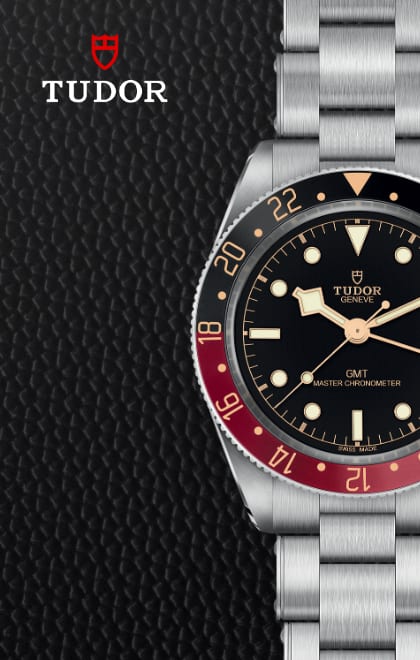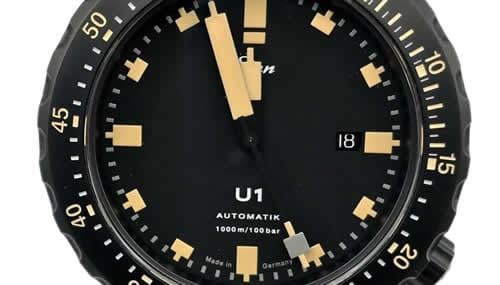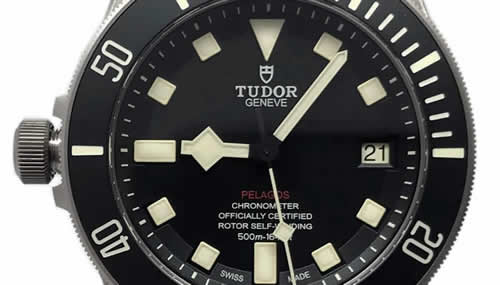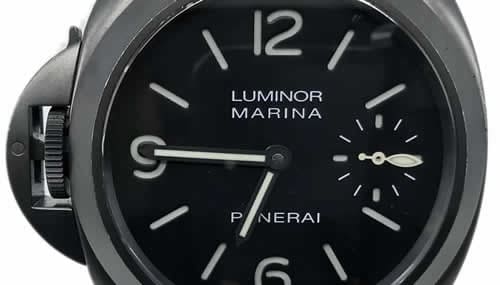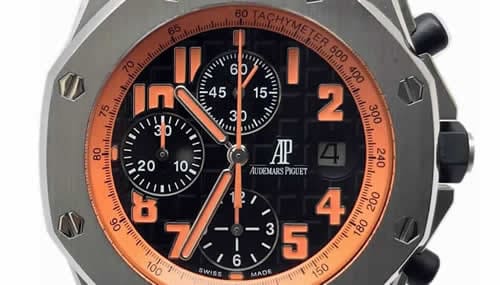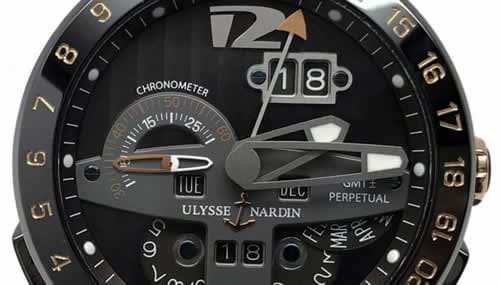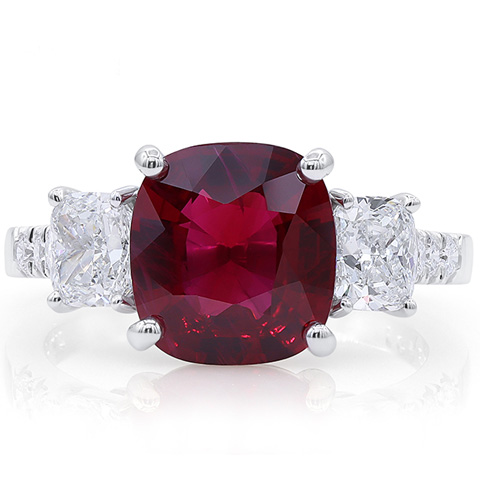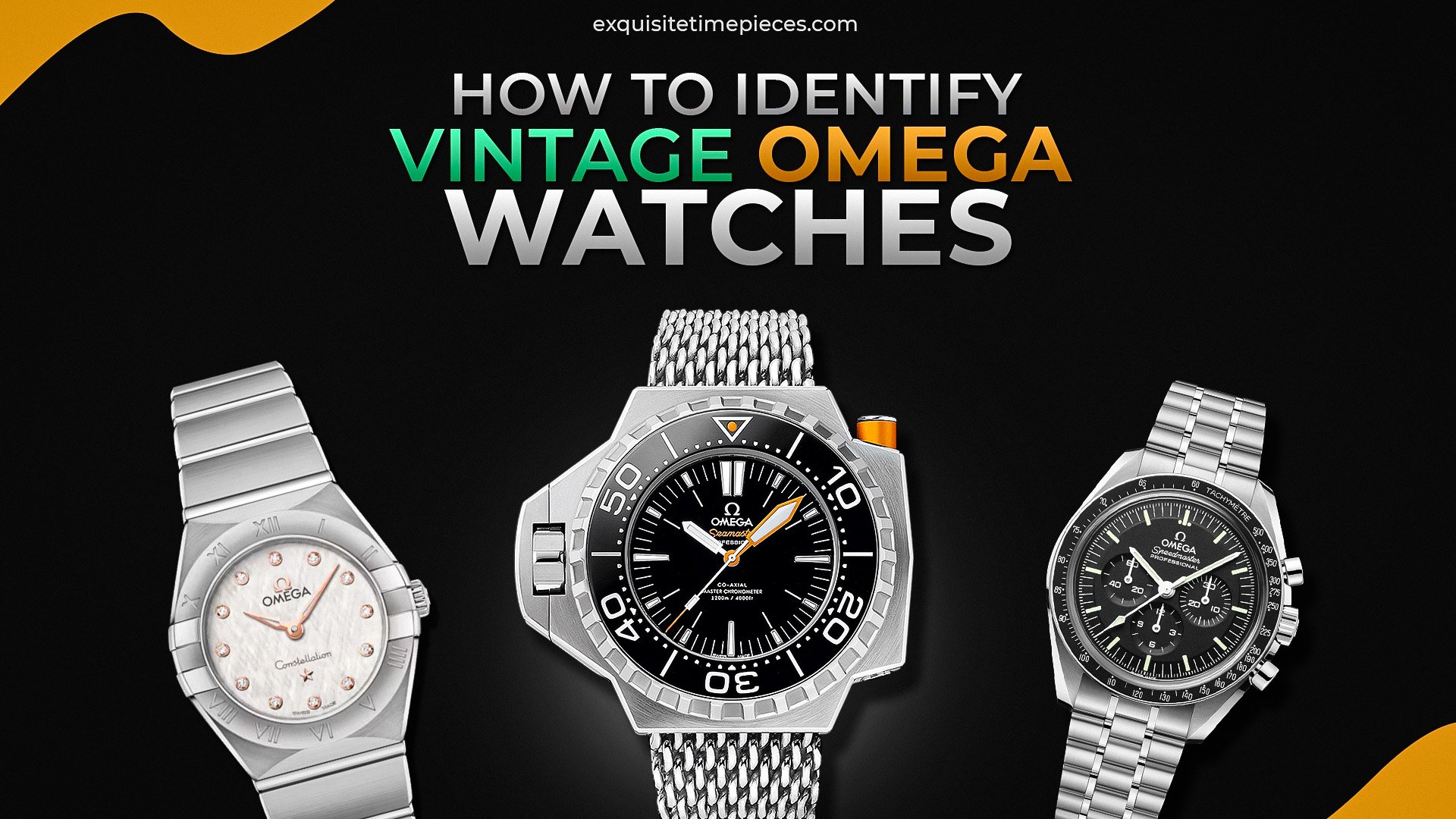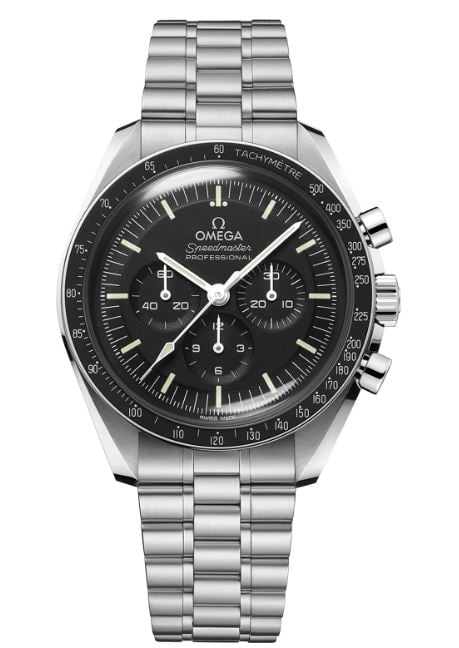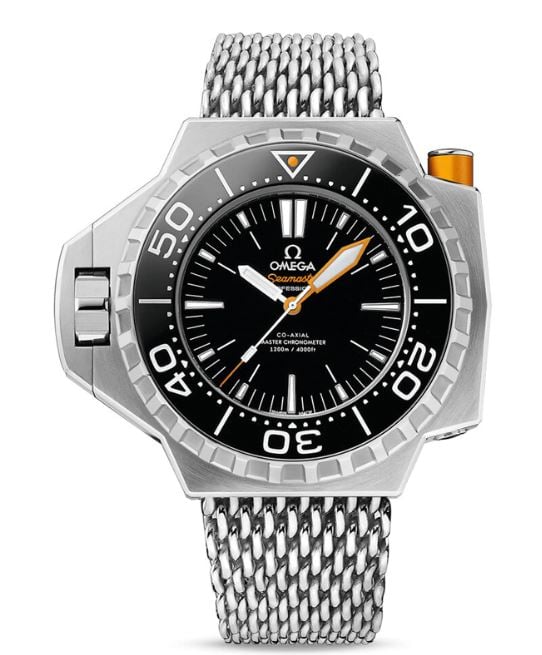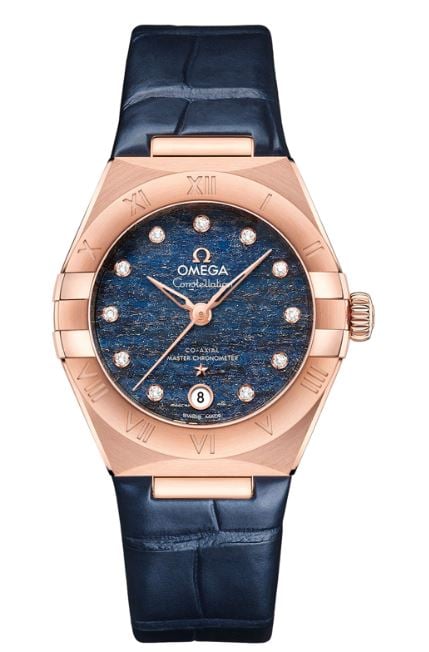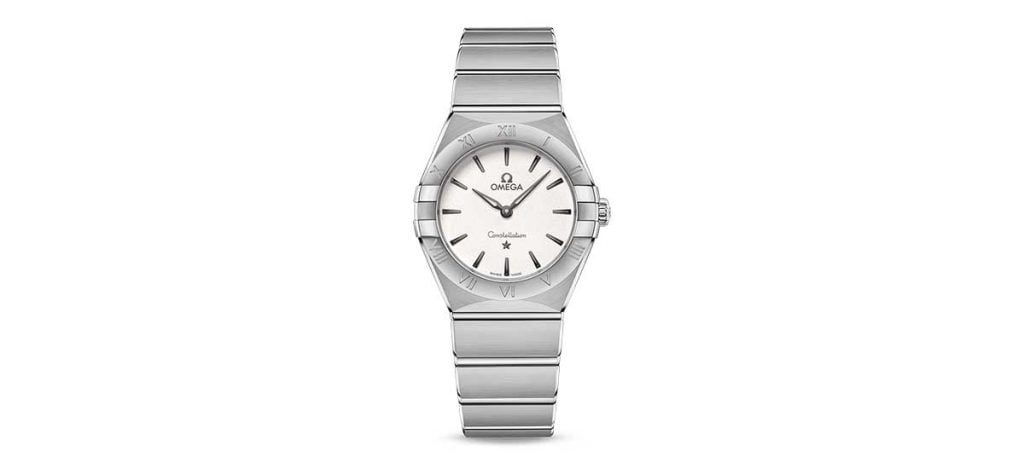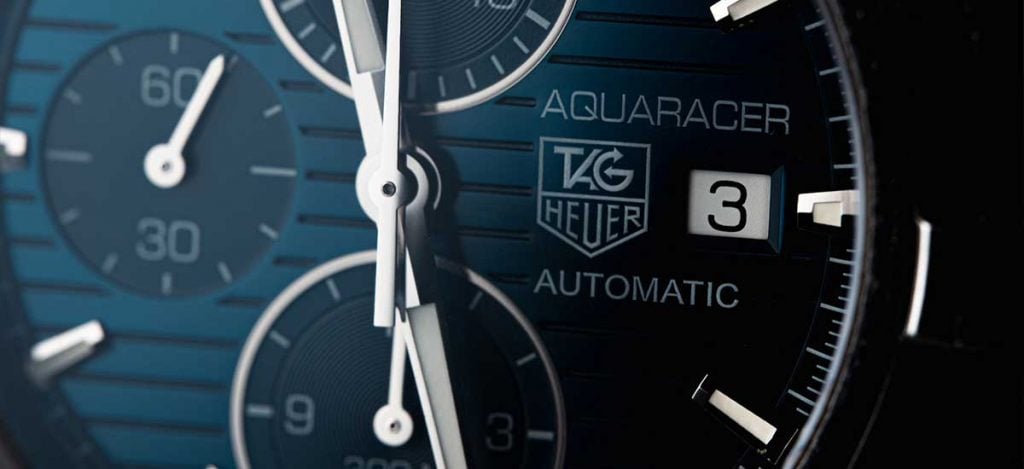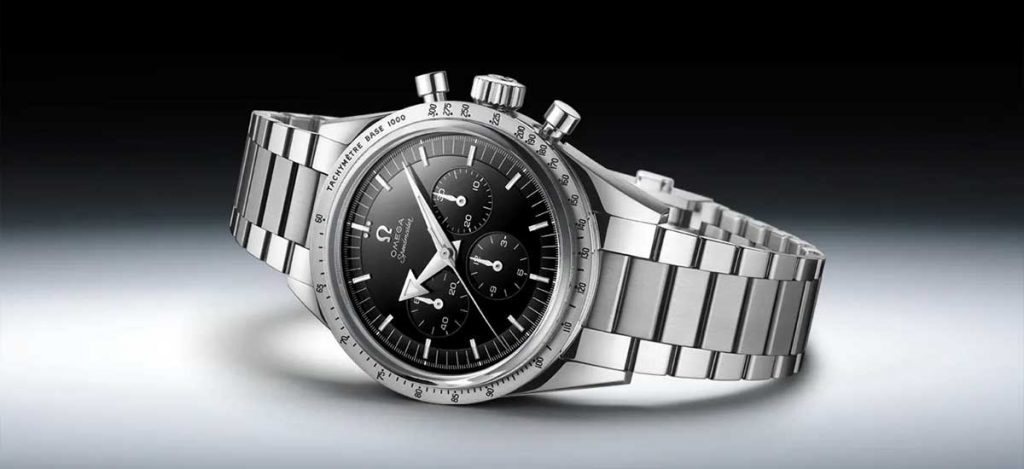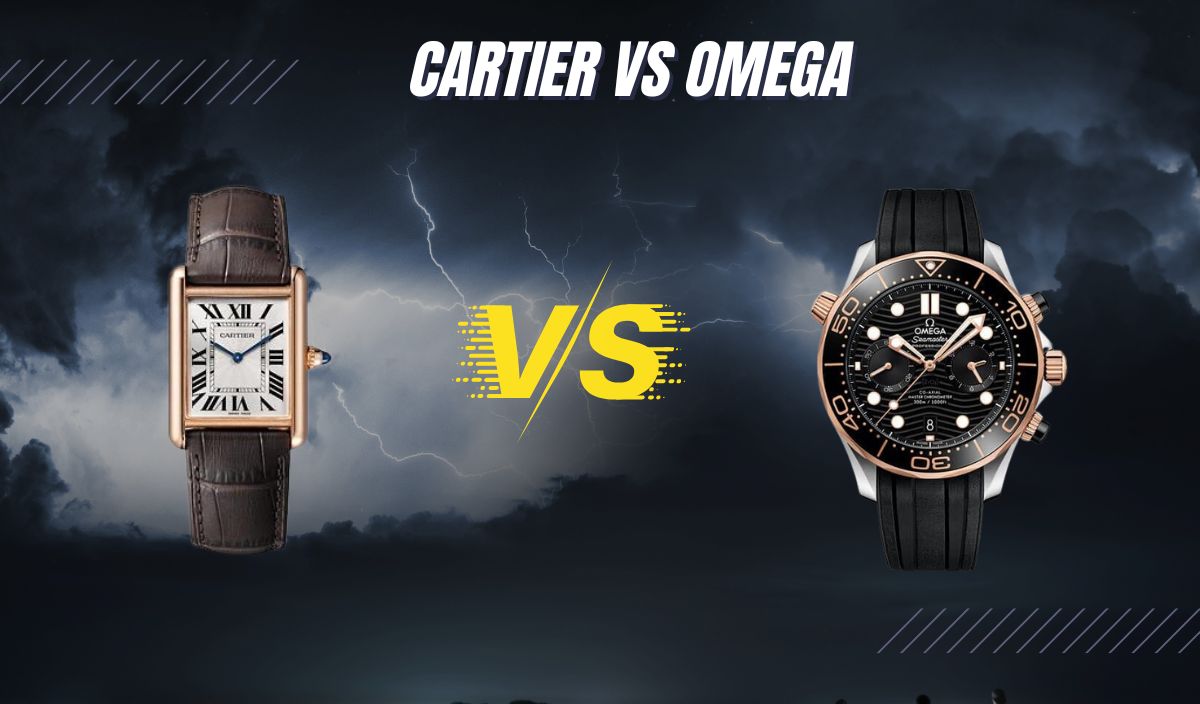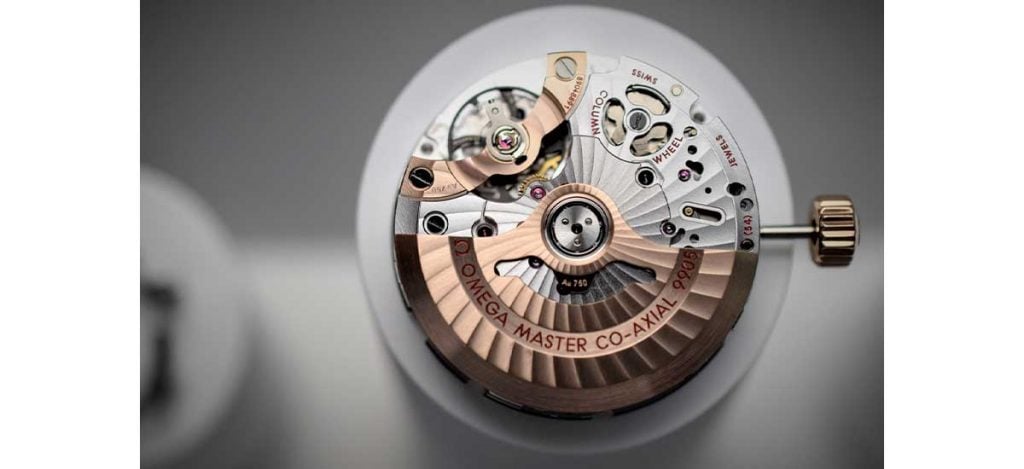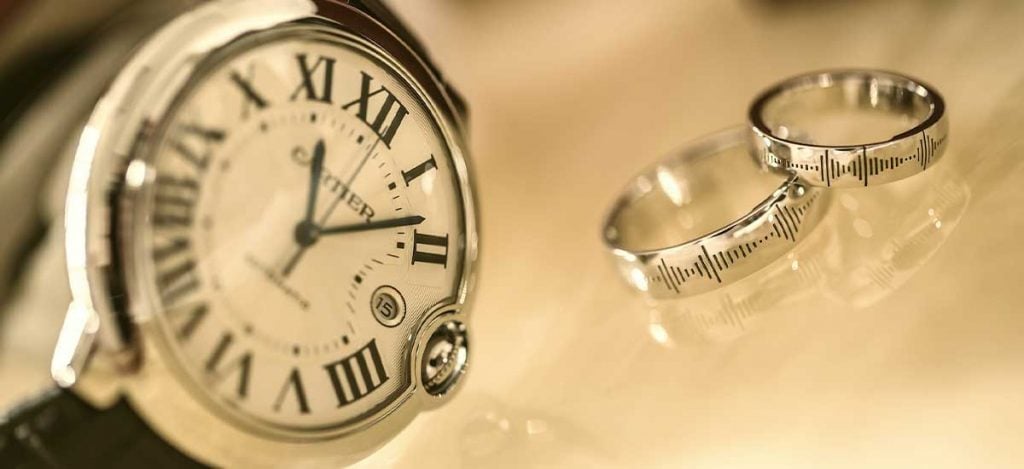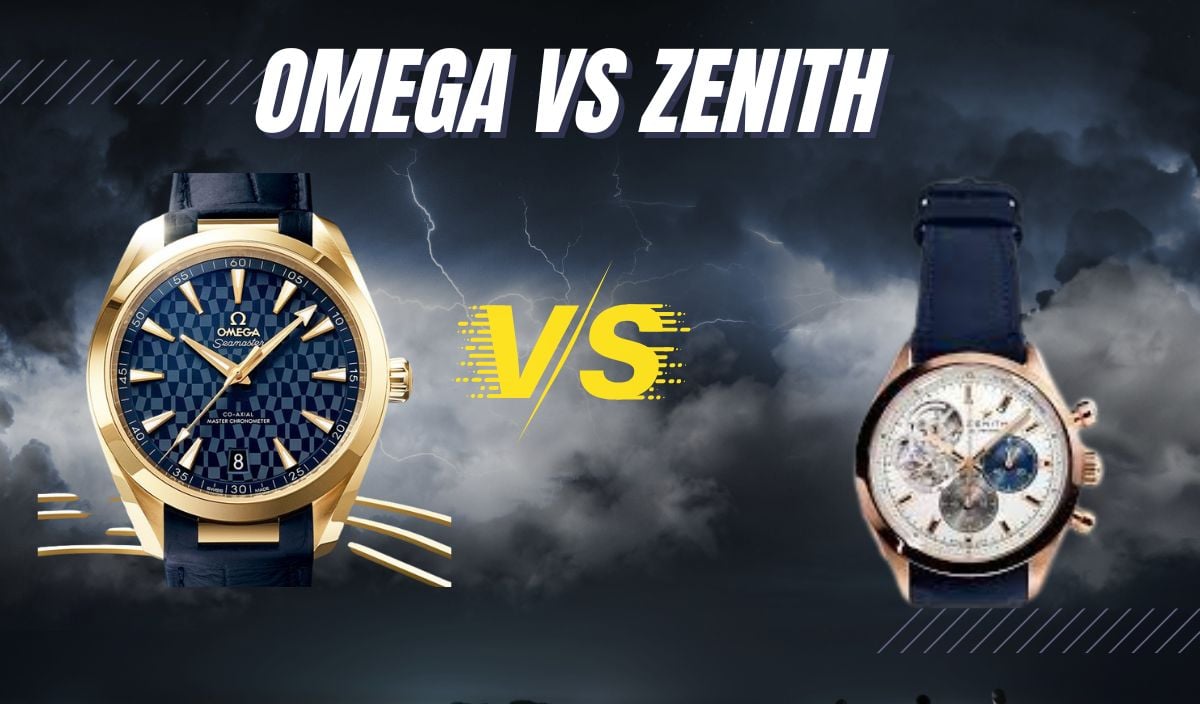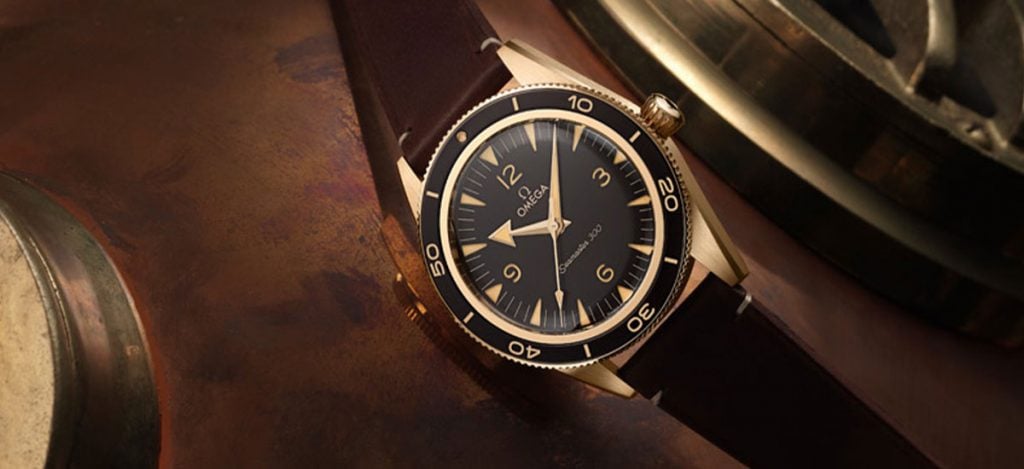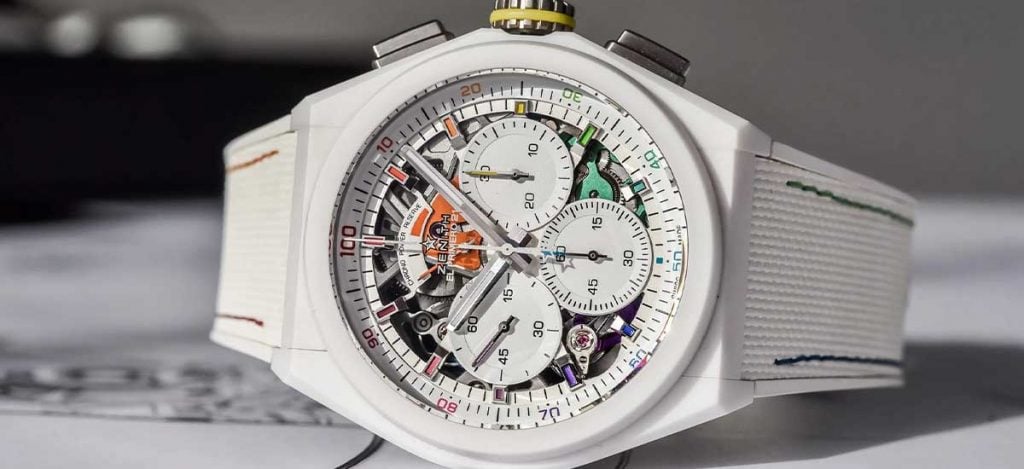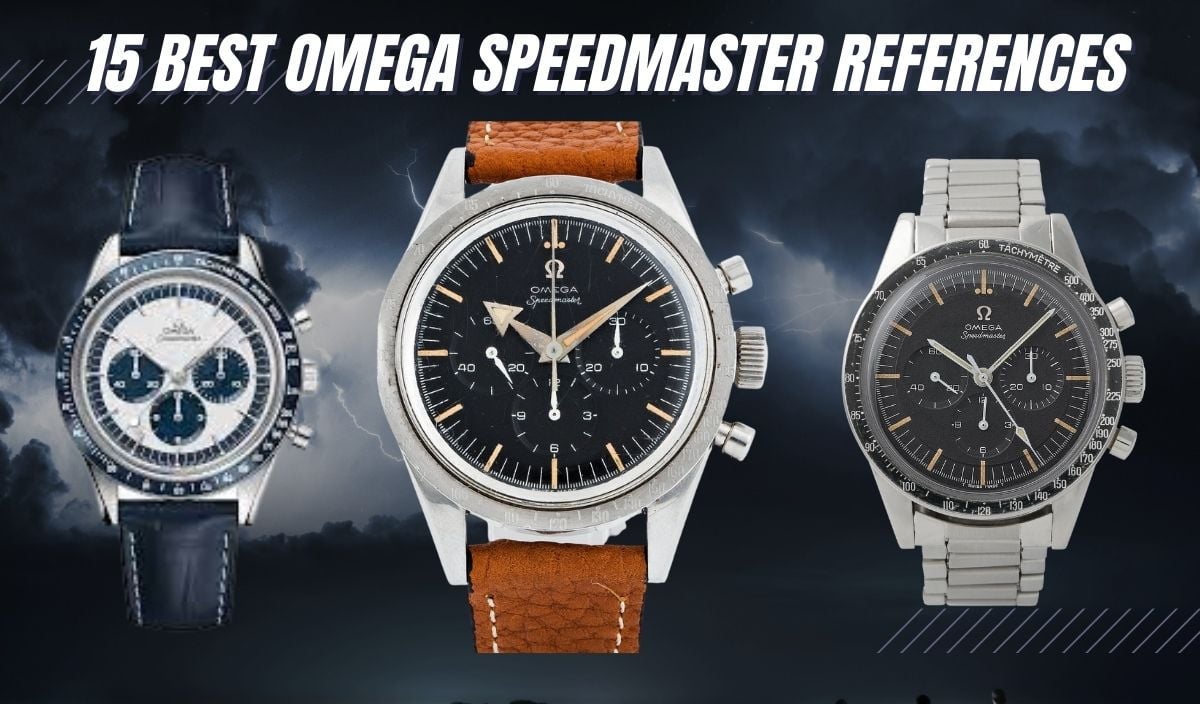
The Omega Speedmaster is one of the world’s most iconic and well-known watch collections. This timepiece has become synonymous with space exploration and has been worn by astronauts on various NASA missions, including the famous Apollo 11 mission in 1969. Over the years, Omega has released numerous iterations of the Speedmaster, each with its own unique features and designs.
In this article, we will be covering the best Omega Speedmaster references, highlighting some of the most sought-after and highly regarded models from the collection. From the classic Speedmaster Professional Moonwatch to the sporty and fun Silver Snoopy Award, we will explore the different styles and functionalities of these impressive timepieces.
We will also delve into the history of the Speedmaster and its relationship with space exploration, highlighting some of the most significant moments in the watch’s history. Additionally, we will discuss the various materials, movements, and complications used in these watches, providing readers with a comprehensive understanding of what makes each Speedmaster reference unique.
About the Omega Speedmaster
Originally introduced in 1957, the Speedmaster quickly gained a reputation for its precision and durability, making it a popular choice among professional race car drivers and pilots. However, it wasn’t until 1965 that the Speedmaster gained international recognition as the first watch to be flight-qualified by NASA for space missions.
Since then, the Speedmaster has become an integral part of NASA’s space program, worn by astronauts on all six lunar landings and various space missions. The Speedmaster’s reliability and accuracy in extreme conditions have made it an essential space exploration tool and earned it the nickname “Moonwatch.”
The Omega Speedmaster’s design is characterized by its distinctive black dial, tachymeter bezel, and chronograph function, allowing the wearer to accurately measure elapsed time. The watch is powered by a mechanical movement, which has been continually updated and refined over the years.
The Speedmaster Professional Moonwatch remains the most popular and iconic model, featuring a stainless steel case and bracelet, a hesalite crystal, and a black dial with white markers. Other notable models include the Speedmaster Automatic, which features an automatic movement and a date function, and the Speedmaster Racing, which has a sportier design and a tachymeter bezel with colored markings.
Omega Speedmaster Characteristics
The Omega Speedmaster’s timeless design and exceptional performance have made it a popular choice among professionals and adventurers. Here are some of the key characteristics that make the Omega Speedmaster such a special watch.
Design: The Omega Speedmaster has a classic design that has remained largely unchanged since its inception in 1957. Its black dial with white markers, tachymeter bezel, and chronograph function make it instantly recognizable and highly functional.
Durability: The Speedmaster was originally designed for professional use, and its durability is a testament to its ruggedness. Its stainless steel case and bracelet, scratch-resistant sapphire crystal, and water resistance make it a watch that can withstand the toughest conditions.
Accuracy: The Omega Speedmaster is known for its accuracy and precision, thanks to its mechanical movement and chronograph function. The watch can measure elapsed time down to 1/8th of a second, making it an essential tool for professionals and adventurers.
Legacy: The Omega Speedmaster’s legacy in space exploration is perhaps its most significant characteristic. The Speedmaster was the first watch to be flight-qualified by NASA for space missions and has been worn by astronauts on all six lunar landings. Its reliability and accuracy in extreme conditions have made it an integral part of NASA’s space program and earned it the nickname “Moonwatch.”
The Best Omega Speedmaster References
1. OMEGA SPEEDMASTER PROFESSIONAL MOONWATCH 310.30.42.50.01.002
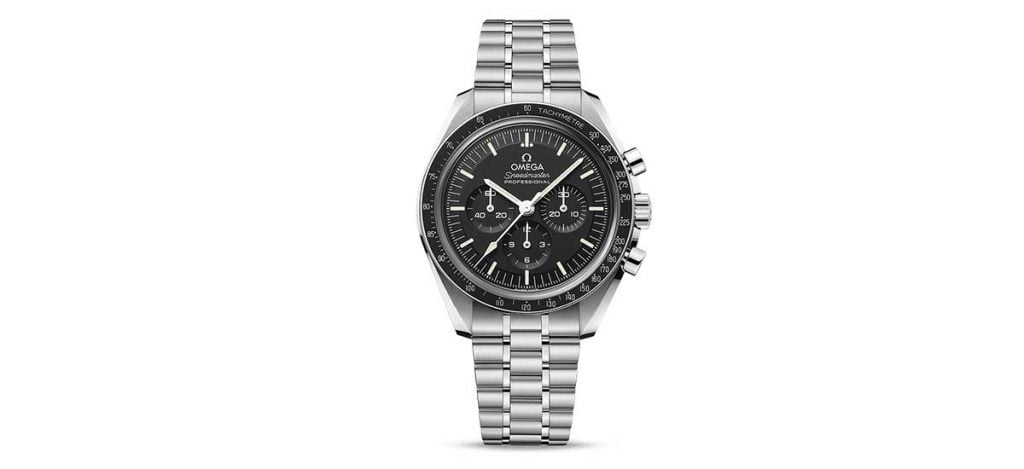
The watch features a 42mm stainless steel case with a black ceramic bezel and a matching black dial. The watch is powered by the manual-winding Caliber 3861 movement, a highly-accurate and reliable movement certified by both COSC and METAS.
One of the notable features of this watch is the bracelet, which is made of brushed stainless steel and features a polished Omega logo on the clasp. The bracelet is also equipped with Omega’s patented rack-and-pusher system, allowing easy adjustments without needing tools.
The timepiece has a 42mm case size. It sits at 13.7mm thick. The bracelet feels dressy, with its short cross-section links that are tapered. The watch offers many removable links, making it easy to find the perfect size.
The watch dial is matte black and includes a tachymeter. It offers an open back, displaying the 3861 Omega movement. 50 power reserve. Water-resistant to 50M.
Price: $7,600
2. OMEGA SPEEDMASTER PROFESSIONAL MOONSHINE GOLD 310.60.42.50.99.002
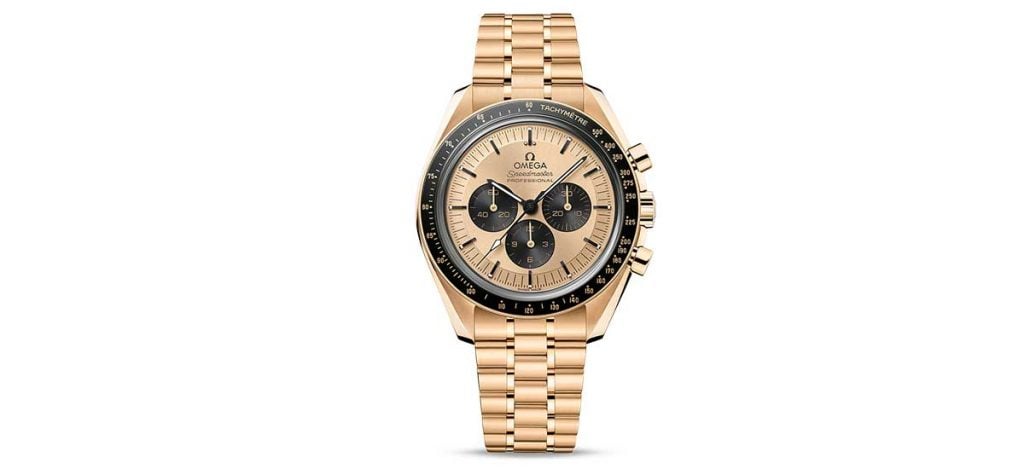
The Omega Speedmaster Professional Moonshine Gold is a testament to Omega’s commitment to excellence and attention to detail, and it features some of the brand’s most advanced technology and materials.
The watch features a 42mm case made of Omega’s exclusive Moonshine gold, a unique alloy developed specifically for this watch. It sits at 13.2mm on the wrist. This alloy has a unique hue that is brighter and more lustrous than traditional gold, and it is also more resistant to fading over time.
The watch’s bezel is made of black ceramic and features a tachymeter scale for measuring speed. The dial is also black and features indexes and hands made of Moonshine gold, as well as a small seconds subdial at 9 o’clock and a 30-minute recorder at 3 o’clock.
Powering the watch is the Omega Caliber 3861 movement. The bracelet is made of Moonshine gold and features a brushed finish.
Price: $41,400
3. OMEGA SPEEDMASTER PROFESSIONAL SEDNA GOLD 310.60.42.50.01.001
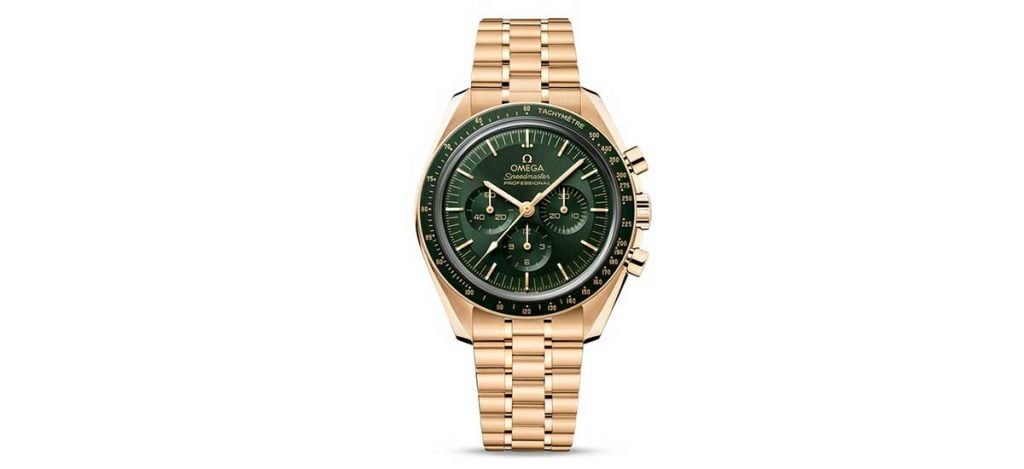
The Omega Speedmaster Professional Sedna Gold is a modern interpretation of the iconic Speedmaster design, featuring a striking combination of black, gold, and brown tones.
The 42mm case is made of Sedna gold, a unique alloy developed by Omega that combines gold, copper, and palladium to create a distinctive reddish hue. It has a thickness of 13.2mm. The watch’s bezel is made of black ceramic and features a tachymeter scale for measuring speed.
The dial is also black and features indexes and hands made of Sedna gold, as well as a small seconds subdials. The watch is powered by the Omega Caliber 3861 movement. The watch is paired with a five-arched-links-per-row bracelet.
Price: $39,400
4. OMEGA SPEEDMASTER PROFESSIONAL CANOPUS GOLD 310.60.42.50.02.001
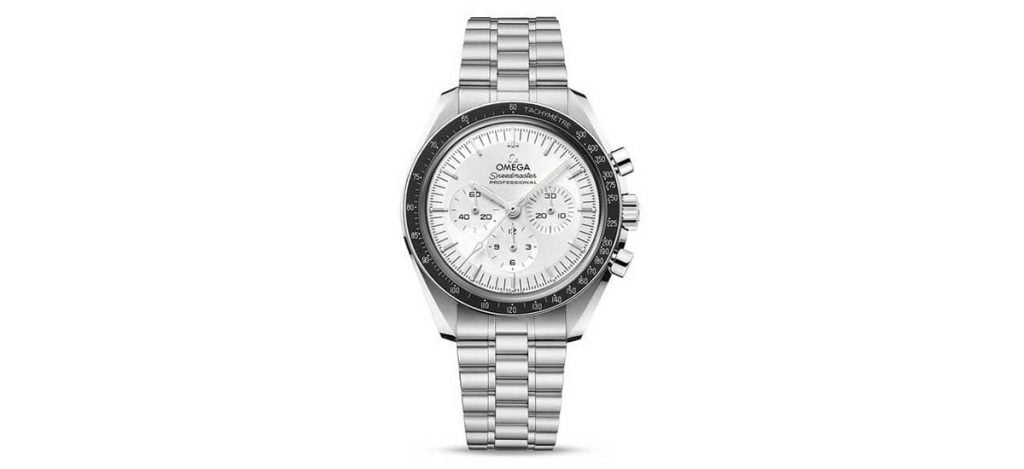
The Omega Speedmaster Professional Canopus Gold has a 42mm case made of Canopus gold, an exclusive white gold alloy developed by Omega that is highly lustrous and has a distinctive brightness. It’s gray gold with a steel look. It sits 13.2mm thick. The timepiece features an aluminum bezel, which gives it a unique look. The dial features a sun-brushed silver look with multiple shades.
Price: $51,300
5. OMEGA SPEEDMASTER CALIBER 321 “ED WHITE” 311.30.40.30.01.001
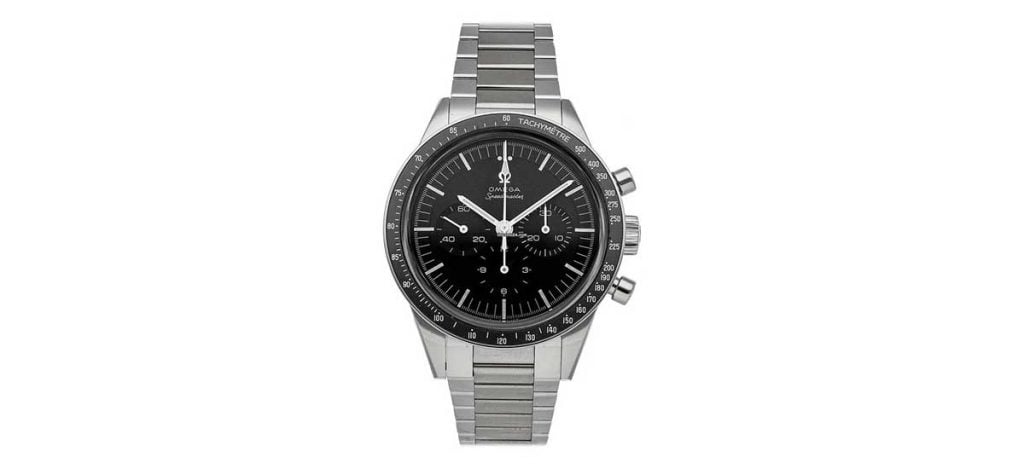
The Omega Speedmaster “Ed White” is a highly sought-after luxury watch that pays homage to the NASA astronaut Ed White, who wore the first Omega watch in space during the Gemini IV mission in 1965. White was the first American to do a spacewalk.
This model is a modern reissue of the original Speedmaster reference worn by White and features a classic design with a few modern upgrades. The watch’s case measures 39.7mm in diameter and is made of stainless steel, which gives it a durable and sturdy construction, and sits 14mm thick.
These dimensions are distinct from the typical Moonwatch from Omega. The black dial has a clean and straightforward design with contrasting white indices. The sub-dials at 3, 6, and 9 o’clock display the chronograph’s functions, including the 12-hour and 30-minute counters and the small seconds.
The iconic tachymeter scale is present on the bezel, allowing the wearer to measure speed based on time and distance. The Caliber 321 movement powers the watch and is a significant upgrade from its predecessor. The movement was first used in the original Speedmaster reference in the 1950s and has been completely restored and updated for modern use.
The manually wound movement features a column-wheel chronograph and delivers a power reserve of up to 55 hours. The bracelet wears like a strap and features a vintage look, along with a vintage Omega logo. However, while the design is vintage, the construction is modern, offering a far more robust and solid bracelet than those of yesteryear.
Price: $14,600
6. OMEGA SPEEDMASTER PLATINUM METEORITE 311.93.42.30.99.001
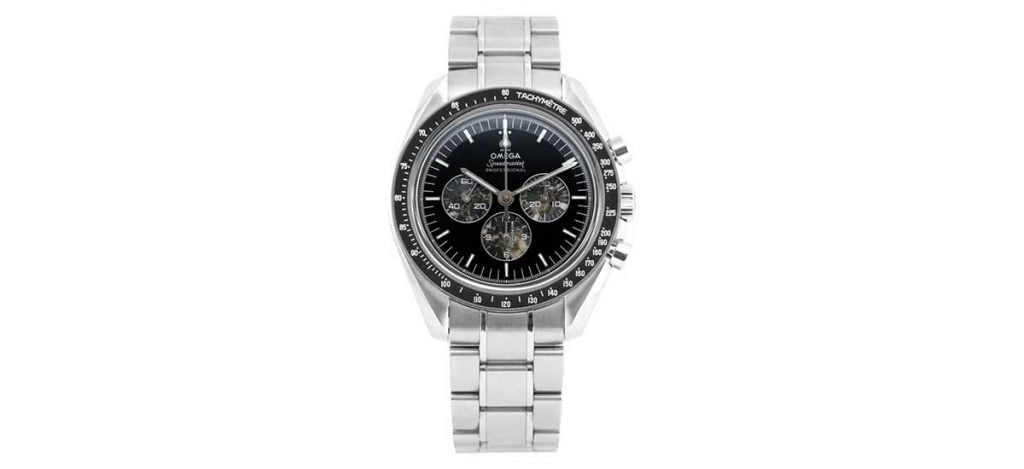
The Omega Speedmaster Platinum Meteorite is a luxurious and highly exclusive watch that is a true work of art. The watch’s case and bracelet are crafted from 950 platinum, a rare and precious metal highly sought after for its lustrous appearance and durability.
The watch’s dial is a silky black onyx, and the subdials are made of genuine meteorite, giving it a unique and otherworldly appearance. The meteorite has been carefully cut and polished to reveal its natural pattern of interlocking crystalline structures.
The watch is powered by Omega’s Caliber 321 movement, a self-winding chronograph with a Co-Axial escapement and a silicon balance spring. The movement delivers a power reserve of up to 55 hours and is visible through the sapphire crystal case back, which allows the wearer to admire the intricate details of the movement. The timepiece is paired with a black alligator leather strap.
Price: $61,800
7. OMEGA SPEEDMASTER DARK SIDE OF THE MOON 311.92.44.30.01.001
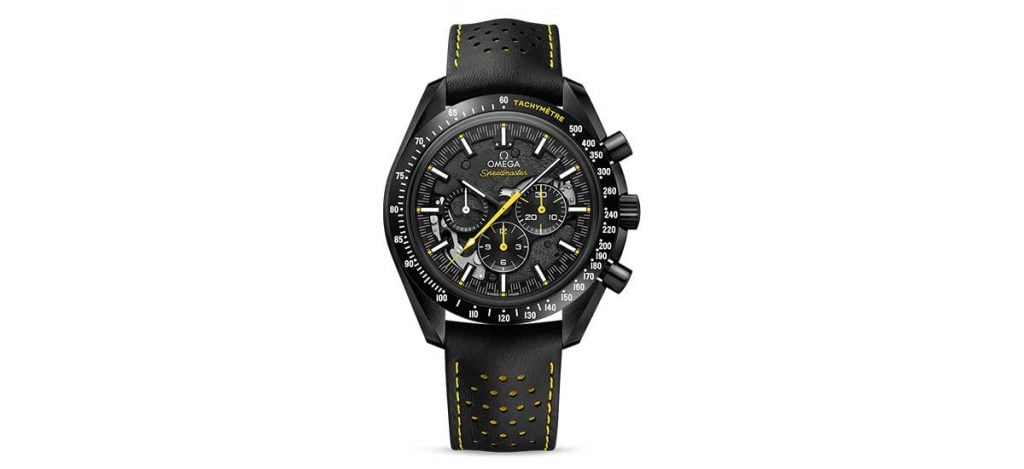
The Omega Speedmaster Dark Side of the Moon is a luxurious, sleek, and sporty timepiece. This watch is part of Omega’s Speedmaster collection, known for its excellent chronograph function and durability since its introduction in 1957.
This specific model is inspired by the dark side of the moon and is designed to pay homage to the Apollo 8 mission, which was the first-time humans orbited around the moon. The watch features a 44.25mm black ceramic case that is scratch-resistant and lightweight, perfect for everyday wear.
The black ceramic bezel is also equipped with a tachymeter scale that enables the wearer to measure speed based on time elapsed. The watch sits at 13.8mm on the wrist. The dial of the watch is black, with a moon surface pattern, and is partially skeletonized. The indexes and the hour and minute hands are white and outlined in black.
The seconds hand and two of the subdial hands are yellow, matching the yellow markings on the dial and the yellow stitching on the black leather strap and its yellow rubber interior. The timepiece is powered by the Omega Caliber 1869 movement, which is an automatic movement with a column-wheel chronograph mechanism. This movement provides a power reserve of up to 48 hours.
Price: $10,200
8. OMEGA SPEEDMASTER SILVER SNOOPY AWARD 310.32.42.50.02.001
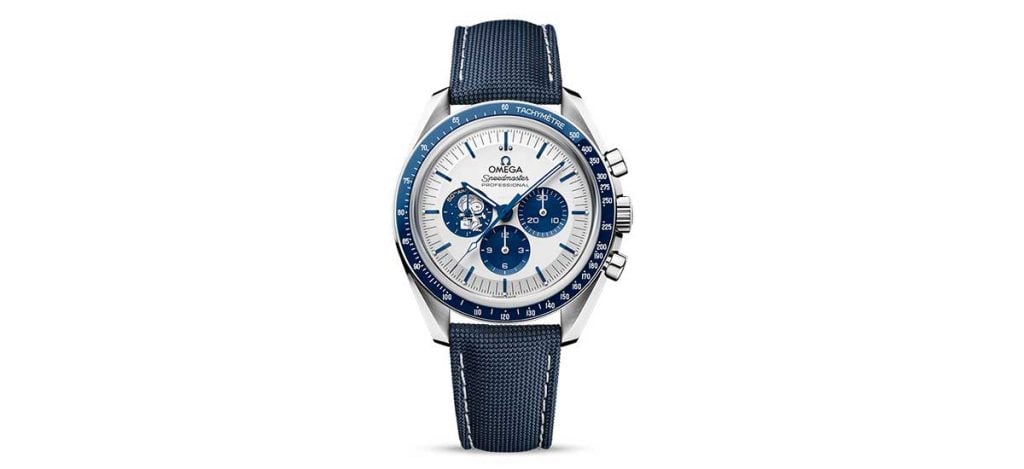
The Omega Speedmaster Silver Snoopy Award is a timepiece designed to commemorate the recognition Omega received from NASA for their role in the Apollo missions. The watch features a 42mm stainless steel case with a blue ceramic bezel that has a tachymeter scale.
The bezel is made with Liquidmetal, a special alloy highly resistant to deformation and corrosion, ensuring the watch’s longevity. The watch also has a sapphire crystal that is anti-reflective, scratch-resistant and has a Snoopy design on the back.
The dial of the watch is white with black subdials, and it features a cartoon image of Snoopy on the small seconds subdial at 9 o’clock. The Snoopy image is surrounded by a textured blue disc, giving the watch a playful yet elegant look. The hands and indices are made of 18k white gold and are coated with a luminescent material.
The Omega Speedmaster Silver Snoopy Award is powered by the Omega Caliber 3861 movement with a power reserve of up to 50 hours. The watch has a blue nylon fabric strap with a silver lining and a fold-over clasp. The strap is comfortable and adjustable, ensuring that the watch stays securely on the wearer’s wrist.
Price: $10,000
9. OMEGA SPEEDMASTER 1957 TRILOGY 311.10.39.30.01.001
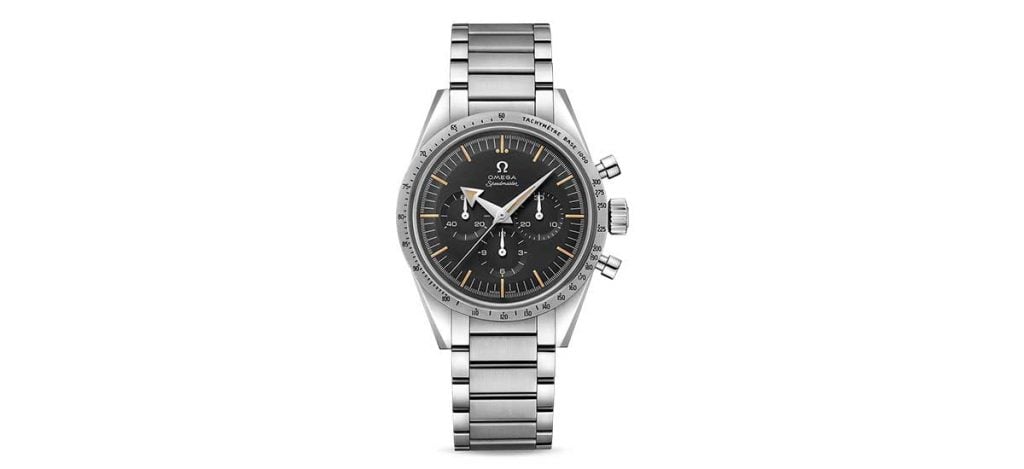
The Omega Speedmaster 1957 Trilogy is a faithful re-creation of the original Speedmaster from 1957, the first chronograph wristwatch with a tachymeter scale on the bezel. The watch features a 38.6mm stainless steel case with a brushed finish and a black tachymeter bezel.
The case has straight lugs, giving the watch a vintage feel. The case back is also made of stainless steel and is engraved with the original Speedmaster Seahorse medallion, adding to the watch’s nostalgic appeal. The watch has a hesalite crystal, a type of plastic used in the original 1957 model, providing a vintage look and feel.
The dial of the watch is black and features a triple-register chronograph layout with baton-style hour markers and vintage-style hands. The timepiece has a small seconds subdial at 9 o’clock, a 30-minute recorder at 3 o’clock, and a 12-hour recorder at 6 o’clock.
The Omega Speedmaster 1957 Trilogy is powered by the Omega Caliber 1861 movement, a manual-winding chronograph movement that is the same movement used in the original Speedmaster from 1957. This movement has a power reserve of up to 48 hours. The watch comes with a vintage stainless-steel bracelet.
Price: $7,600
10. OMEGA SPEEDMASTER MARK II 327.10.43.50.01.001
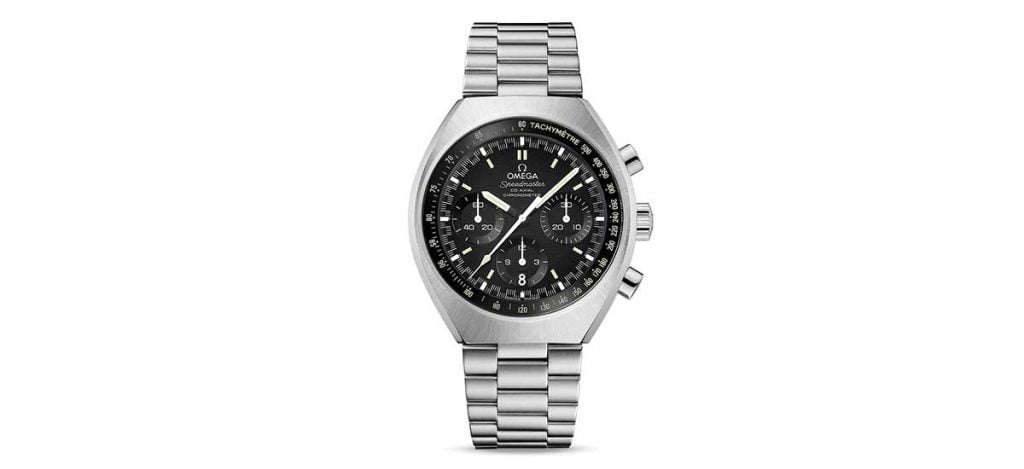
The Omega Speedmaster Mark II is a modern interpretation of the original Speedmaster Mark II from the 1970s. The watch features a sleek and sporty design that is both functional and stylish. The watch has a 42.4mm stainless steel case with a brushed finish and polished accents.
The case has a tonneau shape, which is a departure from the traditional round shape of the Speedmaster. The watch also features a black aluminum tachymeter bezel that is set into the case, adding to the sporty aesthetic of the watch.
The watch’s dial is black with white indices and hands coated with luminescent material. The watch has three subdials, including a small seconds subdial at 9 o’clock, a 30-minute recorder at 3 o’clock, and a 12-hour recorder at 6 o’clock.
The Omega Speedmaster Mark II is powered by the Omega Caliber 3330 movement, a self-winding chronograph movement that has a power reserve of up to 52 hours.
The watch comes with a stainless-steel bracelet that has a brushed finish and polished accents. The bracelet is comfortable to wear and has a fold-over clasp with a push-button release, ensuring that the watch stays securely on the wearer’s wrist.
Price: $6,250
11. OMEGA SPEEDMASTER RACING 329.30.44.51.04.001
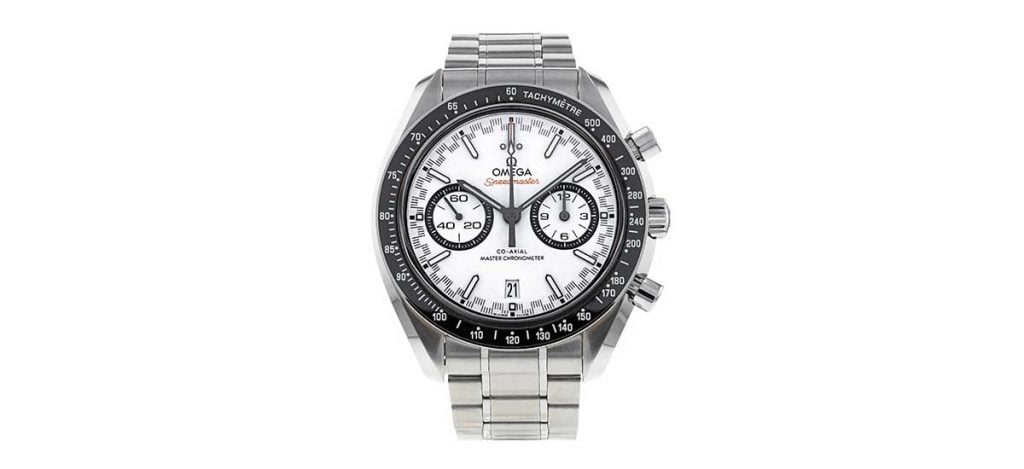
The Omega Speedmaster Racing has a panda face, with its white sandpaper pattern dial and black ringed twin register. The blackened hands and indices are easy to read, and a date window at the 6 o’clock position.
The case size is 44.2mm, and it sits at 14.9mm thick. This watch is best matched with a medium or larger men’s wrist. The bracelet straddles the line between sport and dress. The open case back reveals the 9900-caliber movement with its 60-hour power reserve.
Price: $9,100
12. OMEGA SPEEDMASTER SKYWALKER X-33 318.90.45.79.01.001
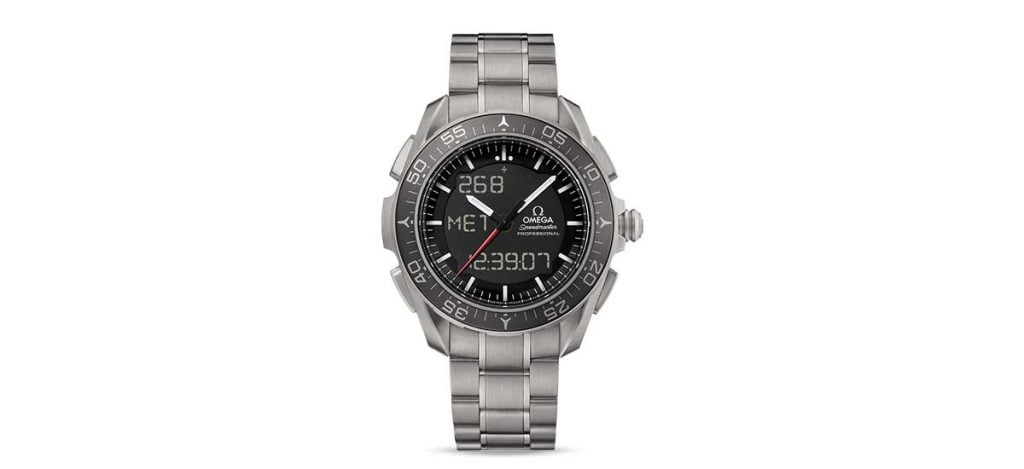
The Omega Speedmaster Skywalker is a highly specialized watch designed for professional astronauts and pilots. The watch is named after the famous X-33 experimental spacecraft and is designed to meet the requirements of space exploration and extreme aviation. The watch has a 45mm titanium case that is both lightweight and durable.
The watch features a bi-directional rotating bezel, and the black dial includes an analog hand with LED windows displaying three time zones, a chronograph, a timer, and the MET, measuring mission elapsed time.
The Omega Speedmaster Skywalker is powered by the Omega Caliber 5619 movement, a multi-functional quartz movement that is highly accurate and reliable. The movement includes a chronograph, countdown timer, alarm, and perpetual calendar functions, all of which are essential for professional pilots and astronauts. The Omega Speedmaster Skywalker comes with a 5-titanium bracelet.
Price: $5,900
13. OMEGA SPEEDMASTER REDUCED 3510.50.00
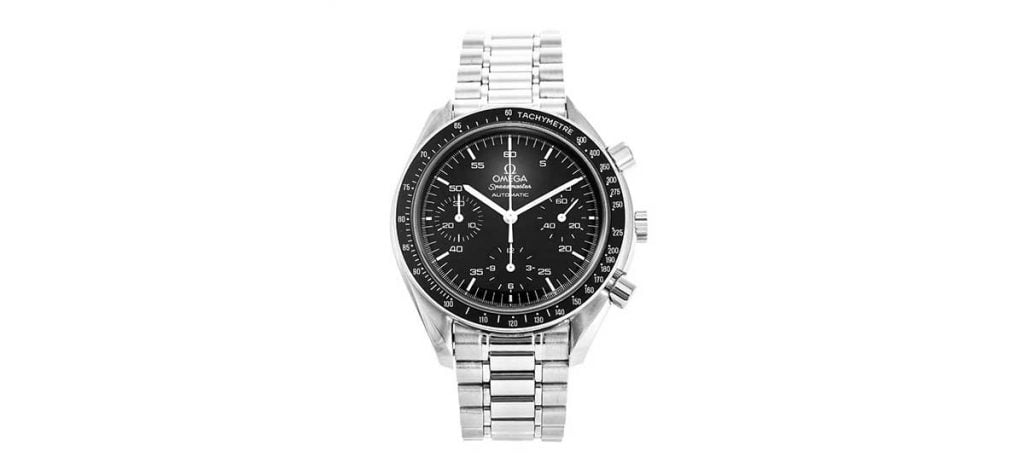
The Omega Speedmaster Reduced is a classic chronograph watch that pays tribute to the iconic Speedmaster collection. The watch features a 39mm stainless steel case with a brushed finish and polished accents, giving it a sophisticated yet sporty look. The watch is 13mm thick. The bezel is black with a tachymeter scale, which is a hallmark of the Speedmaster collection.
The watch’s dial is black with silver-tone indices, and hands coated with a luminescent material for easy reading in low light conditions. The watch has three subdials, including a small seconds subdial at 9 o’clock, a 30-minute recorder at 3 o’clock, and a 12-hour recorder at 6 o’clock.
The date window is located between 4 and 5 o’clock. The Omega Speedmaster Reduced 3510.50.00 is powered by the Omega Caliber 3220 movement, a self-winding chronograph movement that has a power reserve of up to 40 hours.
The watch comes with a stainless steel bracelet with a brushed finish and polished accents. The bracelet looks and feels like a vintage Rolex president. The bracelet is comfortable to wear and has a fold-over clasp with a push-button release, ensuring that the watch stays securely on the wearer’s wrist.
Price: $1,800
14. OMEGA SPEEDMASTER ALASKA PROJECT 311.32.42.30.04.001
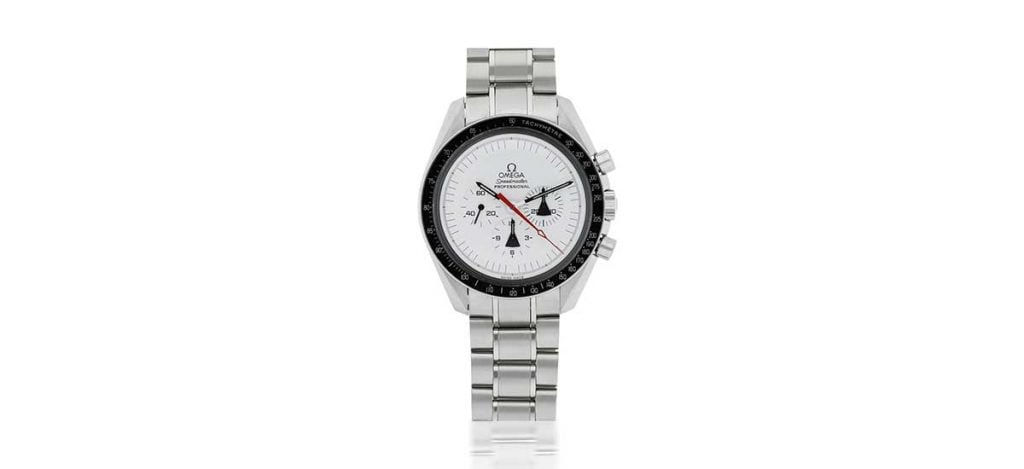
The Omega Speedmaster Alaska Project 311.32.42.30.04.001 is a special edition timepiece created by Omega as a tribute to the iconic “Alaska Project” watches that were designed for NASA’s space exploration program in the 1970s.
This watch features a 42mm stainless steel case with a matching bracelet, both of which have been treated with a special coating to protect against extreme temperatures. The watch also comes with a white Velcro strap.
The Omega Speedmaster Alaska Project 311.32.42.30.04.001 is powered by the Omega Caliber 1861 manual-winding movement, which is a renowned movement used in previous Omega Speedmaster watches that have been to space. This movement provides a power reserve of approximately 48 hours.
One of the standout features of this watch is its unique “thermo-compensated” chronograph, which can measure time accurately in extreme temperatures ranging from -148°F to +572°F (-100°C to +300°C). This feature was specifically designed for the Alaska Project watches to ensure accuracy during space exploration.
The Omega Speedmaster Alaska Project 311.32.42.30.04.001 is a limited edition watch with only 1,970 pieces produced, paying homage to the year that the first Omega Speedmaster Professional chronograph was flight-qualified by NASA for space missions.
It also comes with a special presentation box that includes a tool to change the bracelet and a certificate of authenticity.
Price: $20,000
15. OMEGA SPEEDMASTER FIRST OMEGA IN SPACE 311.32.40.30.01.001
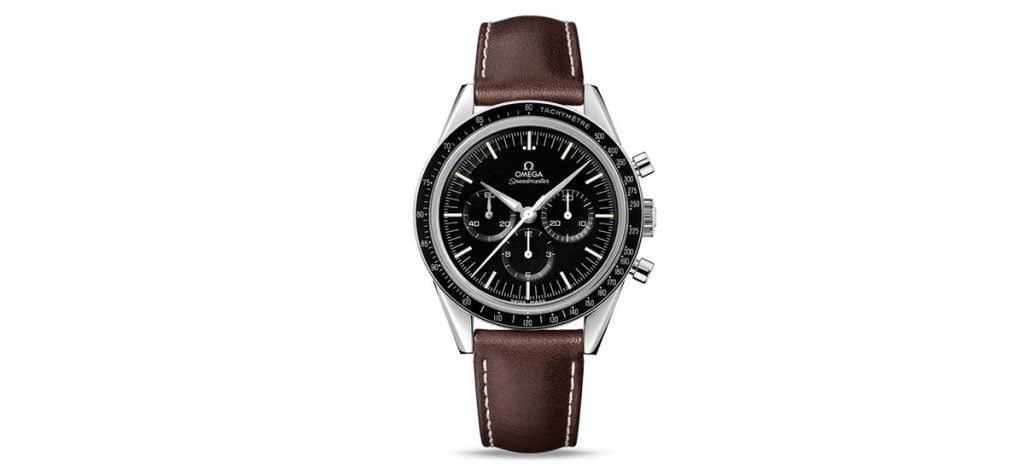
The Omega Speedmaster First Omega in Space is a timepiece inspired by the watch worn by astronaut Wally Schirra during the Mercury-Atlas 8 mission in 1962, which was the first manned spaceflight for the United States to achieve orbit. This watch pays homage to the pivotal role that Omega’s Speedmaster played in space exploration.
The watch features a 39.7mm stainless steel case with a black dial and a scratch-resistant sapphire crystal. The black dial has luminous hands and markers, providing excellent readability in any lighting condition. The bezel is a traditional tachymeter scale, which allows for quick calculations of speed.
The Omega Speedmaster First Omega in Space is powered by the Omega Caliber 1861 manual-winding movement, with a power reserve of approximately 48 hours.
One of the notable features of this watch is its vintage-style brown leather strap, which adds a touch of retro elegance to the design. The strap has a polished buckle with the Omega logo engraved on it.
The Omega Speedmaster First Omega in Space is a limited edition watch with only 1962 pieces produced, a nod to the year of Schirra’s historic mission. It also comes with a special presentation box that includes a certificate of authenticity.
Price: $5,300
Parting Thoughts
The Omega Speedmaster is a watch that combines classic design, exceptional performance, and a rich history in space exploration. Its durability, accuracy, and versatility make it a favorite among professionals and adventurers, while its timeless design and legacy make it a true icon in the world of horology.
I’ve long felt the Omega Speedmaster is one of those quintessential timepieces that can symbolize a major milestone in one’s life or career. Whatever your reasoning, the Speedmaster won’t disappoint.


